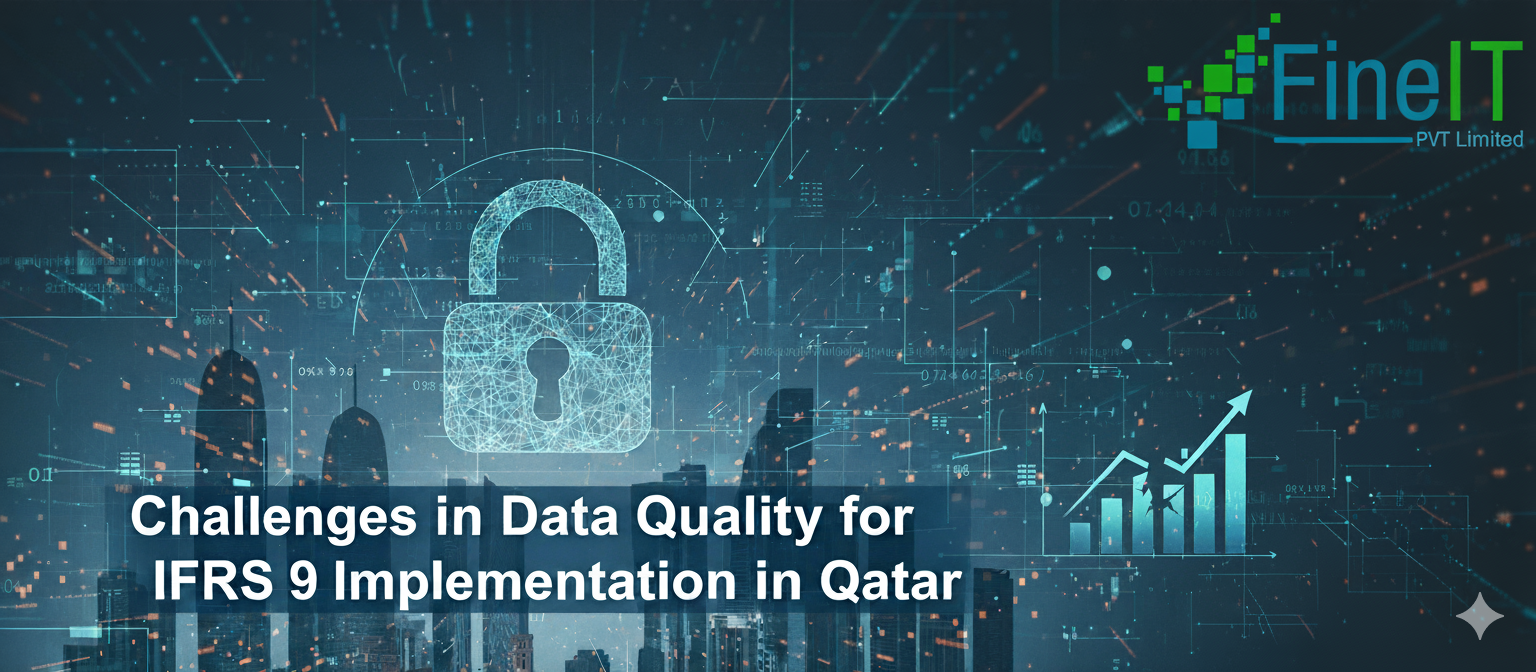The implementation of International Financial Reporting Standard 9 (IFRS 9) for financial instruments has been a pivotal undertaking for banks and financial institutions globally, and Qatar is no exception. Mandated by the Qatar Central Bank (QCB), IFRS 9 replaces the old ‘incurred loss’ model with a forward-looking Expected Credit Loss (ECL) model, requiring institutions to provision for losses much earlier.
While IFRS 9 enhances the resilience and transparency of the financial sector, its success is fundamentally dependent on the quality, completeness, and availability of data. For financial institutions in Qatar, managing data quality for IFRS 9 remains one of the most significant and complex implementation challenges.
The Critical Role of Data in IFRS 9
IFRS 9’s core requirement is to calculate ECL based on a three-stage impairment model, which necessitates a substantial increase in the volume and granularity of data. The ECL calculation is a sophisticated process that relies on three main inputs:
- Probability of Default (PD): The likelihood of a borrower defaulting over a specific period.
- Loss Given Default (LGD): The expected loss a bank will incur if a default occurs.
- Exposure at Default (EAD): The outstanding amount the bank expects to be owed at the time of default.
Calculating these parameters accurately requires not only historical internal data but also complex, forward-looking macroeconomic variables (like GDP growth, oil prices, and unemployment rates) that are specific to the Qatari and global economic context.
Key Data Quality Challenges in Qatar’s Banking Sector
Qatari financial institutions, like their regional counterparts, frequently encounter several data-related hurdles in achieving IFRS 9 compliance:
- Historical Data Gaps: The ECL models require extensive historical data (often 5-7 years) on defaults, recoveries, and credit risk factors. Many older legacy systems may not have captured or retained data with the necessary granularity (e.g., at a facility or transaction level) required for IFRS 9’s detailed staging and modeling. This is particularly challenging for accurately back-testing the models.
- Data Consistency and Integration: Data needed for ECL calculations often resides in disparate systems—core banking, risk management, finance, and data warehouses. Discrepancies in data definitions, measurement methodologies, or reporting dates across these siloed systems can lead to inconsistent and unreliable ECL figures.
- Incorporating Forward-Looking Information: IFRS 9 is explicitly forward-looking. Banks must integrate forecasts of economic scenarios (baseline, optimistic, and pessimistic) into their ECL models. Ensuring the quality, relevance, and defensibility of this macroeconomic data, and its link to credit risk parameters, is a continuous challenge.
- Data Governance and Auditability: The QCB demands rigorous control over the ECL process, including strict requirements for data integrity and a comprehensive audit trail. Institutions must be able to demonstrate that their data inputs are complete, accurate, and traceable from the source system through to the final financial statement disclosure.
- Defining Significant Increase in Credit Risk (SICR): The most critical judgment in the ECL model is the criterion for moving a loan from Stage 1 (12-month ECL) to Stage 2 (Lifetime ECL). This trigger relies on the quality of data measuring the change in default risk since origination. Missing or inconsistent data on original credit ratings, performance metrics, or contractual terms makes defining and operationalizing SICR extremely difficult.
Mitigating the Challenges
To overcome these data quality hurdles and achieve robust, compliant IFRS 9 implementation, Qatari banks need to focus on:
- Data Cleansing and Remediation: Implementing dedicated projects to identify, cleanse, and enrich historical data, often involving manual intervention and mapping to new IFRS 9 data fields.
- Establishment of a Central Data Layer: Creating an integrated risk and finance data architecture (such as a unified data lake or warehouse) to provide a single, consistent source of truth for all ECL-related inputs.
- Enhanced Data Governance Framework: Implementing clear data ownership, quality controls, and validation procedures across the organization, ensuring data meets the QCB’s high standards for completeness and accuracy.
- Continuous Model Validation: Regularly validating and back-testing ECL models, not just for accuracy but also for the underlying data’s integrity and relevance, which is a key supervisory focus for the QCB.
Conclusion:
IFRS 9 has fundamentally changed the landscape of credit risk provisioning in Qatar. While the initial compliance deadlines have passed, the challenge is now about embedding these changes into BAU (Business As Usual) processes and ensuring the sustained quality of the data that underpins the multi-billion-dollar ECL estimates. Continued investment in data infrastructure, governance, and specialist expertise is essential for Qatari financial institutions to meet the QCB’s mandate and leverage IFRS 9 for strategic risk management.
At FineIT, we specialize in helping Qatari banks and financial institutions design, validate, and optimize their IFRS 9 ECL models, ensuring full alignment with QCB regulations.
From data governance frameworks to model validation, scenario calibration, and reporting automation, our experts bring hands-on experience in making IFRS 9 compliance both robust and efficient.
➡️ Let’s turn compliance into a strategic advantage.



